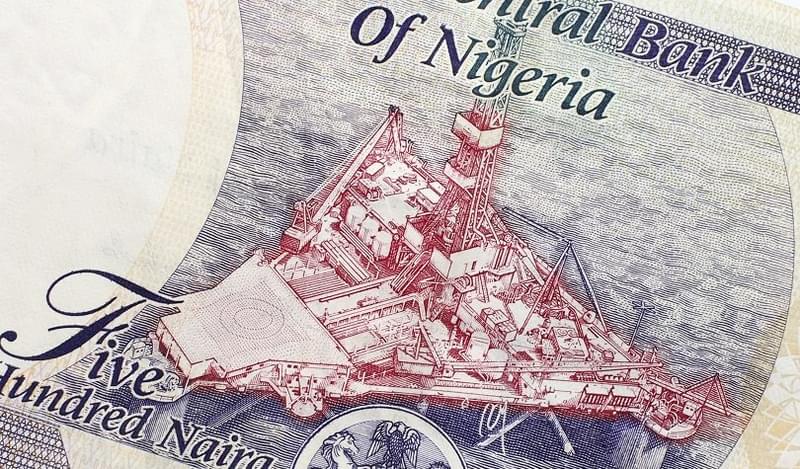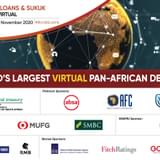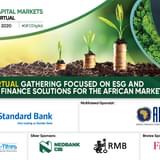Four months since the Nigerian Central Bank removed the naira’s peg against the dollar in June, allowing the currency to fall from 199 to the dollar to 282.50, Nigeria still faces an FX problem.
The naira’s official rate has fallen further following the devaluation, with figures from Bloomberg showing it currently trading at 317.60. In the parallel markets, the naira has fared even worse, and is trading at 455 to the dollar according to abokiFX, up from around 330 at the time of the naira’s devaluation.
Although the naira’s devaluation was intended to solve the FX issue, the problem has remained a thorn in the side for Nigerian policymakers. The mismatch of the naira between the parallel and official markets is largely due to the fact that alongside supporting the naira versus the dollar, creating an artificial (if official) exchange rate, the Central Bank limited its access, so those in search of foreign currency were forced to use the unofficial rate in the parallel market.
Although historically both the black market parallel rate and the official rate remained relatively close – in 2014 maximum deviations between the two were around 10% – limited access to the official rate means the parallel market has been somewhat incorporated into mainstream use.
According to John Ashbourne, Africa economist at Capital Economics, the parallel market is now generally used to determine the real exchange rate – as it is the rate that is tracked on a daily basis. As a result, despite its ‘illegality’, policy has been geared towards making the parallel rate, rather than the official rate, central to the economy and to doing business.
Others disagree however, noting that the parallel markets are exposed to around 20% of the country’s turnover. The official rate, despite offering worse terms, still accounts for the majority of any imports in Nigeria.
Fuel imports, amounting to around 30% of the import bill, go through at 305 to the dollar, small transactions up to US$500,000 are being done at 315, which accounts for around 10% of the market, and larger wholesale transactions are being done at between 325 and 345, which represents around 20-30% of the market. The remainder is being done on the black market.
“The black market remains the focus of attention because it remains the only segment of Nigeria’s FX market where there is any real price discovery in a transparent way – but it does not mean that it is the most important part of the market,” said Alan Cameron, director and economist at Exotix.
He added that the black market is being legitimised in part because there are 41 items for which you cannot go to the Central Bank to obtain FX to pay importers. Imports of these products will not stop (in most cases), which range from rice and poultry, steel and clothes, to Eurobond shares and private jets, and there is a need to source FX for these, which the parallel market provides for with the government’s blessing.
However, the fact that the government persists with what is in effect a half-pegged official rate is, alongside depressed oil prices and output, one of the main factors limiting dollar-denominated foreign investment into the country, according to Ashbourne.
“Investors simply will not provide funds to Nigeria if they believe that the naira still needs to be devalued by an additional 30% or more,” he said.
Ashbourne added that many investors believe that although reforms have occurred, they have only gone half way.
“The current system cannot be maintained indefinitely, and investors want to see a further adjustment of the currency, as well as see the system reach a sustainable equilibrium and the completion of reforms before they return to Nigeria.”
The return of foreign investment would provide a substantial inflow of FX to the economy. Portfolio flows in Q2 2016 were down 85% year-on-year compared to the same period in 2015. Flows from last year were also half those seen in 2014. FDI has also fallen drastically.
Although the simplest method to open the taps on foreign investment to Nigeria would be to allow a complete free float of the naira – which would lead to a convergence of the parallel and official rates – any move would be politically cumbersome.
Nevertheless, a free-floating currency would be the best method to address the backlogs of demand that the Central Bank is trying to address. Reserves are now at around US$24bn, which is half what they were a few years ago – and they are likely continue falling as long as oil prices and production remain low.
“There are very few sources of dollars entering the country at present. It is an unsustainable system,” said Ashbourne.
However, Cameron noted that the pressure for devaluation does not come from the need to clear the backlog, and that and that’s its external funding needs are lower than most believe. Cameron added that the pressure for further devaluation of the naira comes instead from an increase in the widening of the spreads between the official and parallel markets and the opportunities this presents for corruption
“Nigeria’s external funding needs are actually less than many people imagine. The balance of payments deficit for Q2 was around US$400mn, which is not massive.”









